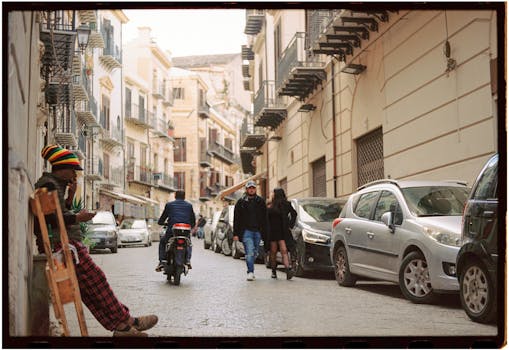
Traveling Through Time: How Europe’s Historical Heritage Shapes Modern Lifestyles in 2025 – WordPress
Introduction to Europe’s Historical Heritage
Europe, with its vast and diverse history, has always been a hub of cultural, architectural, and artistic innovation. The continent is home to some of the world’s most famous historical landmarks, such as the Colosseum in Rome, the Eiffel Tower in Paris, and Big Ben in London. These iconic structures have not only withstood the test of time but have also played a significant role in shaping modern lifestyles in Europe. In this article, we will explore how Europe’s historical heritage continues to influence contemporary lifestyles, from architecture to cultural traditions, and what it means for the future.
The Impact of Historical Heritage on Modern Architecture
One of the most noticeable ways in which Europe’s historical heritage shapes modern lifestyles is through architecture. Many European cities have preserved their historical buildings and incorporated them into modern urban landscapes. For example, the city of Barcelona is famous for its Gothic Quarter, which features narrow streets, historic buildings, and picturesque plazas. This blend of old and new has created a unique and vibrant urban environment that attracts tourists and locals alike. Moreover, modern architects often draw inspiration from historical styles, such as Art Nouveau, Gothic, and Renaissance, to create innovative and sustainable buildings that respect the past while embracing the future.
The Role of Historical Heritage in Shaping Cultural Traditions
Europe’s historical heritage also plays a significant role in shaping cultural traditions and lifestyles. Many European countries have a rich cultural heritage, with traditions and customs that date back centuries. For example, the Spanish siesta, the Italian love of pasta, and the French tradition of fine cuisine are all examples of how historical heritage has influenced modern lifestyles. These cultural traditions not only bring people together but also provide a sense of identity and community. Furthermore, many European cities host historical festivals and events, such as the Tomatina festival in Spain and the Carnival of Venice in Italy, which attract millions of visitors each year and celebrate the continent’s rich cultural heritage.
The Future of Historical Heritage in Europe
As we look to the future, it is essential to consider the role of historical heritage in shaping modern lifestyles in Europe. With the increasing threat of climate change, urbanization, and technological advancements, there is a risk that Europe’s historical heritage could be lost or forgotten. However, many European cities are taking steps to preserve their historical heritage, from restoring ancient buildings to promoting cultural traditions. For example, the city of Vienna has launched a initiative to preserve its historical coffeehouses, which have been a staple of Viennese culture for centuries. Similarly, the city of Amsterdam has implemented a range of measures to protect its historic canals and architecture.
Conclusion
In conclusion, Europe’s historical heritage continues to play a significant role in shaping modern lifestyles, from architecture to cultural traditions. As we move forward in 2025, it is essential to preserve and protect this heritage for future generations. By doing so, we can ensure that the continent’s rich history and culture continue to thrive and inspire people around the world. Whether you are a history buff, an architecture enthusiast, or simply a curious traveler, Europe’s historical heritage has something to offer everyone.






